Let’s cut through the noise: email is not dead. In fact, it’s the undisputed ROI king of digital marketing. While TikTok trends come and go, and paid ads keep getting pricier, email remains the quiet powerhouse. And here’s the stat to prove it for every $1 you spend on email marketing, you can expect an average return of $44. That’s not hype; it’s data-backed truth from seasoned marketers who’ve seen campaigns go from zero to gold.
If you’re wondering how to start email marketing for beginners, you’re not alone, and you’re not late either. Whether you’re a solopreneur, startup founder, ecommerce store owner, or just trying to grow a blog, this guide is your shortcut to making email marketing work.
In the next few sections, I’ll walk you through everything you need to know from building your first email list to writing emails people actually open, automating your campaigns, testing what works, and tracking results that matter. We’ll talk about the best tools for beginners, how to avoid common traps, and how to grow your audience organically and ethically.
By the end, you’ll not only know how to start email marketing, you’ll know how to do it strategically. Because starting right sets you up for long-term success.
What Is Email Marketing? And Why Should Beginners Care?
So, let’s start with the basics, what exactly is email marketing, and why should you, a total beginner, care?
At its core, email marketing is the practice of sending tailored email campaigns to a group of people who have voluntarily signed up to hear from you. These emails could be about your newest product, a helpful blog post, a time-sensitive discount, or just a personal note to build a deeper relationship. Unlike social media, where algorithms decide who sees your content, email gives you direct access to your audience’s inbox.
Now here’s the kicker: in 2025, email marketing still outperforms every other digital channel in ROI, customer retention, and conversion rate. According to Shopify, brands using email effectively see conversion rates as high as 4.29%, outperforming both social and paid channels. Why? Because email is personal, permission-based, and platform-agnostic. No ads, no scroll wars—just your message and their full attention.
And it’s not just about sales. Email marketing helps you:
- Nurture leads over time
- Build brand trust
- Educate your audience
- Boost retention and loyalty
In short, it’s your digital megaphone but only if used wisely.
If you’re serious about learning how to start email marketing for beginners, knowing why it matters is your first power move. It’s not just about sending a bunch of emails. It’s about creating meaningful, consistent touchpoints that drive long-term value for your business and your audience.
1. Set a Clear Email Marketing Goal
Before you even think about writing that first email or choosing a tool, you need to answer this one question: What do you actually want your email marketing to achieve?
If you’re learning how to start email marketing for beginners, this step is your foundation. Without clear goals, your campaigns will feel like guesswork and worse, your audience will feel it too. Clarity creates confidence. Let’s build that.
Here are a few common beginner-friendly goals:
- Grow your email list with high-quality, engaged subscribers
- Promote products or services and drive direct conversions
- Increase traffic to your website, blog, or YouTube channel
- Build trust and authority with helpful, consistent content
- Convert leads into paying customers through strategic nurturing
Now, let’s match those goals with your audience’s stage in the customer journey.
For example:
- New subscribers? A drip campaign that educates them on who you are.
- Ready-to-buy users? A limited-time offer email with a strong CTA.
- Existing customers? A loyalty reward, referral program, or upsell opportunity.
Tip:
Write down one primary goal and one or two secondary goals. This becomes your content compass—every subject line, every CTA, every automated workflow should serve those objectives.
And here’s where segmentation (don’t worry, we’ll cover that soon) and personalization come into play. A clearly defined goal allows you to build targeted email campaigns that speak directly to each segment—boosting both your open rates and conversion rate.
Trust me: You don’t want to just “send emails.” You want to send the right email to the right person at the right time—and that starts with knowing what success looks like for you.
2. Pick the Right Email Marketing Platform
Alright—goals set? Good. Now you need the right tool to bring your email game to life.
Choosing the wrong platform is like trying to build a house with a spoon. You need something that’s intuitive, powerful, and tailored for someone just starting out. And if you’re wondering how to start email marketing for beginners without getting overwhelmed—this is where it counts.
So, what makes a good email marketing platform for beginners?
You want something that checks these boxes:
- Easy-to-use drag-and-drop editor
- Pre-designed email templates
- Powerful automation features (without the tech headache)
- Reliable analytics (open rate, click-through rate, conversions)
- List management and segmentation tools
- A free or low-cost plan to test the waters
My top 3 beginner-friendly email marketing platforms:
MailerLite
- Why it works: Clean interface, generous free tier, and beginner-focused tutorials
- Comes with automation, pop-up builders, and A/B testing baked in
- Perfect for solopreneurs, bloggers, and content creators
Moosend
- Why it works: Budget-friendly, lightning-fast setup, robust automation for the price
- Offers personalization, audience segmentation, and pre-built templates
- Ideal if you want something simple that scales well as you grow
Constant Contact
- Why it works: Super simple for non-techies, with tons of pre-made designs
- Great for small business owners who need more guidance and support
- Includes event promotion tools and survey forms too
All three tools are built with email marketing for beginners in mind. They each include features like email automation, A/B testing, and list segmentation, making it easy to grow from a first-time sender to a confident strategist.
Tip: Don’t overthink it. Pick one, create an account, and send your first test email.
You can always switch later—but momentum is your best friend right now.
3. Start Building Your Email List The Right Way
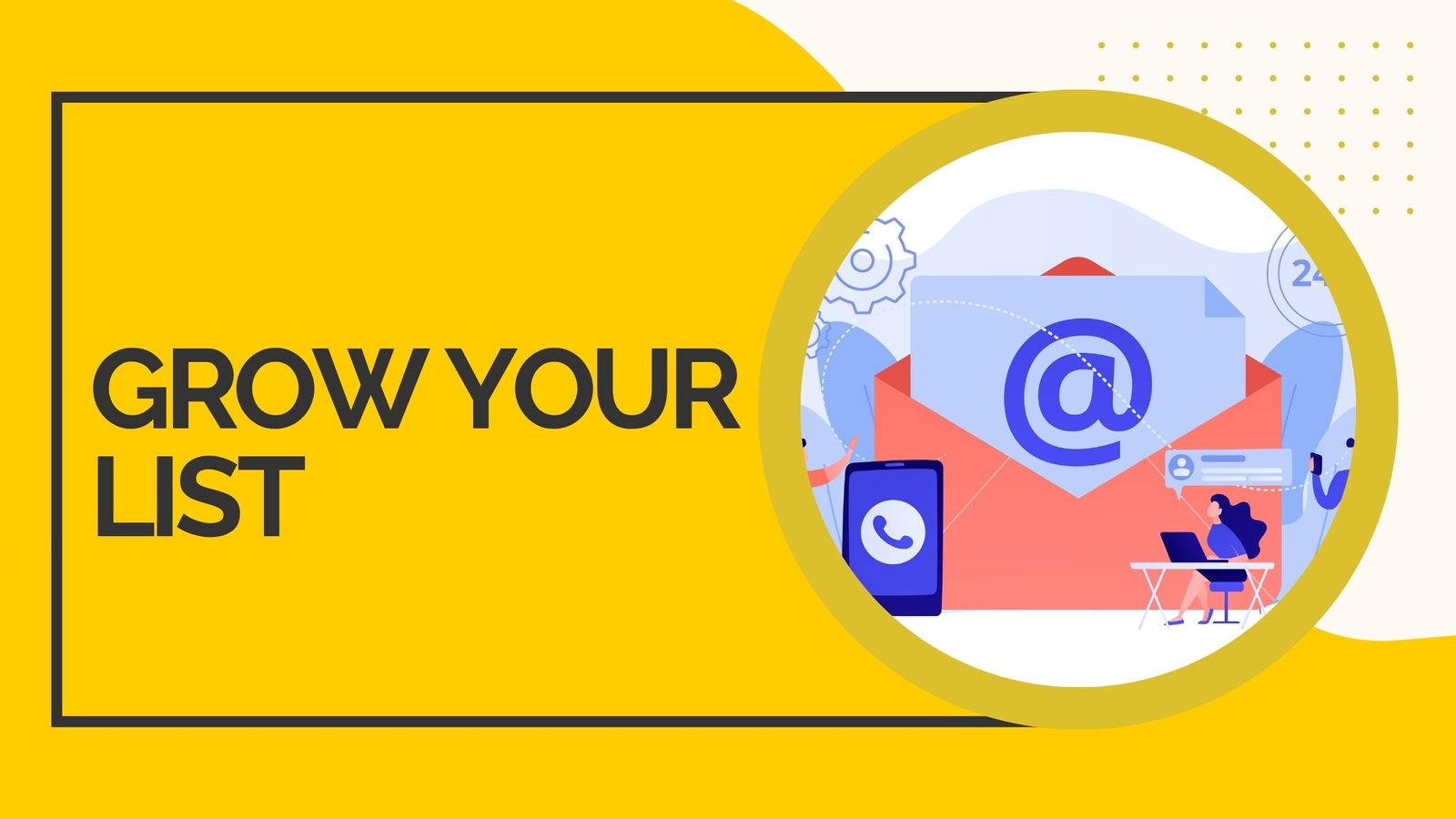
Here’s a hard truth: without a list, you have no email marketing. Your list is your audience, your leads, your customers-in-waiting. And if you’re learning how to start email marketing for beginners, building that list ethically and organically is step zero.
First: Never. Buy. An. Email. List!
Buying contacts might sound like a shortcut, but it’s a fast track to the spam folder. It destroys your sender reputation, tanks your email deliverability, and violates privacy laws like GDPR and CAN-SPAM. No trust, no opens, no conversions. Period.
Instead, build your list like a pro. Here’s how:
Embed Sign-Up Forms on Your Website
Place them in high-traffic spots: headers, sidebars, footers, or as a content gate for freebies. Tools like MailerLite and Moosend let you build beautiful, mobile-friendly forms with ease.
Offer a Lead Magnet
People won’t give you their email “just because.” Give them something valuable in return:
- A free checklist, ebook, or template
- A discount or coupon code
- An exclusive video or webinar replay
This is one of the best ways to build a qualified, high-intent email list.
Promote on Social Media
Link to your opt-in page from your Instagram bio, YouTube description, Twitter/X posts, or LinkedIn profile. Consistent promotion = consistent signups.
Use Pop-Ups and Exit-Intent Forms (Strategically)
Used sparingly and tastefully, these tools work. Trigger pop-ups when a user scrolls 70% of a page or hovers near the exit button. Just make sure they’re mobile-friendly and not intrusive.
Always Use Double Opt-In (And Stay Compliant)
Double opt-in means people confirm their subscription via email. It keeps your list clean and ensures you’re following laws like GDPR (Europe) and CAN-SPAM (U.S.). Plus, it protects your open rates and click-through rates by filtering out fake signups.
When building your list, focus on quality over quantity. You want real people who actually want to hear from you. Because when your emails land in the right inboxes, with the right message, magic happens.
4. Segment Your List for Better Results
Here’s where most beginners go wrong: they treat their email list like one giant group.
But let me tell you this—mass emails are dead. If you want better open rates, stronger click-through rates, and ultimately higher conversion rates, you must segment your audience.
So if you’re serious about how to start email marketing for beginners, segmentation is your secret weapon.
What is segmentation?
Segmentation means dividing your email list into smaller groups based on shared traits. Instead of blasting everyone with the same message, you send the right message to the right people.
That could mean:
- New subscribers vs. loyal customers
- People who clicked on Product A vs. Product B
- Users from Nigeria vs. the U.S.
- Buyers vs. browsers
Why segmentation matters
According to Mailchimp, segmented campaigns earn 14.31% higher open rates and 100.95% higher click-through rates compared to non-segmented campaigns. That’s not just better—it’s transformative.
Segmentation also lets you:
- Deliver better personalization
- Time emails based on behavior (e.g. abandoned carts)
- Run smarter automation workflows
- Improve email deliverability by reducing spam complaint
Easy segmentation ideas to start with:
- Signup source (blog, popup, ad campaign)
- Engagement level (active vs. inactive)
- Purchase history
- Location and time zone
- Interests or content preferences
Tip: Most platforms like Moosend or MailerLite offer segmentation options, even on free plans. Start simple, then get more advanced as your list grows.
If you’re wondering how to start email marketing for beginners and actually see results, segmentation is the turning point.
Stop sending generic newsletters. Start sending personalized email campaigns that feel like they were written just for the reader.
Speaking of that, let’s dive into how to craft emails your audience actually wants to open.
5. Write Emails That Actually Get Read
Okay—your list is growing, and your audience is segmented. Now it’s time to write the thing most people ignore but everyone remembers: the email itself.
If you’re still asking yourself how to start email marketing for beginners, this is where the magic really happens—in the inbox.
Because let’s be honest: nobody wants another boring, templated, “just checking in” email clogging up their morning.
Here’s how to write emails that grab attention, get opened, and drive action.
Start with a Killer Subject Line
Your subject line is your email’s first impression—and your only shot at getting opened.
Keep it:
- Short: Under 60 characters
- Clear: No jargon or filler
- Intriguing: Use curiosity, urgency, or benefit-driven language
Examples:
- “Your free guide is inside”
- “You forgot something…”
- “How to get 3x more clicks in 5 minutes”
Pro Tip: Use A/B testing to find out what subject lines actually perform best with your audience.
Write Irresistible Preview Text
This is the small line of text next to the subject line on most devices.
Make it complement the subject line, not repeat it.
Bad:
Subject: “Free SEO Checklist”
Preview: “Download our free SEO checklist”
Better:
Subject: “Free SEO Checklist”
Preview: “Finally, everything you need to rank—packed into one easy download.”
Keep Your Email Copy Human and Focused
Nobody wants to read a wall of text. Write like you’re talking to one person—not a list.
Tips:
- Use short paragraphs
- Write in second-person voice (“you,” not “we”)
- Focus on one goal per email
- Break up content with images, buttons, or dividers
Always include a clear call-to-action (CTA)—make it obvious what the reader should do next.
Optimize for Mobile
Over 70% of email opens happen on mobile.
If your layout, font size, or buttons don’t work on a phone… you’ve lost them.
Make sure your:
- Fonts are readable
- CTAs are thumb-friendly
- Images resize properly
- Load speed is fast
Use Templates—But Make Them Yours
Most platforms like MailerLite and Constant Contact offer pre-designed email templates.
They’re a great way to look professional fast, but customize the content so it sounds like you—not a robot.
If you’re learning how to start email marketing for beginners, mastering the art of writing great emails is the difference between being ignored and being irresistible.
6. Automate Your Emails While You Sleep
You’ve written your emails. They’re clean. Clickable. Converting.
Now imagine if they sent themselves to the right people… at the right time… without you lifting a finger.
That’s what email automation does. It’s the engine that turns your one-time effort into ongoing results.
And if you’re serious about how to start email marketing for beginners, automation is your shortcut to scale.
What is email automation?
Email automation means setting up a series of pre-written emails that are triggered by specific actions your subscriber takes.
READ MORE: WHAT IS EMAIL MARKETING AUTOMATION?
For example:
- Someone signs up? → Send a welcome email (or series)
- They click on a product? → Trigger a product education email
- They abandon cart? → Follow up automatically after 1 hour
Once it’s set up, your email system works 24/7, nurturing leads, onboarding new subscribers, and driving sales—all while you focus on other things.
3 Email Automations Every Beginner Should Set Up
1. Welcome Series
Your welcome email has the highest open rate of any email you’ll ever send (up to 80%).
Make it count.
What to include:
- A warm greeting
- What they can expect from your emails
- Your freebie (if promised)
- CTA to check out your best content or products
Tip: Use a 3-part welcome series instead of just one email for deeper engagement.
2. Abandoned Cart Emails
If you sell anything online, you’re losing money daily from people who leave their cart.
What to do:
- Remind them what they left
- Add urgency (“Only 3 left in stock”)
- Offer a small incentive (discount or bonus)
Stat: Abandoned cart emails can recover up to 20% of lost sales.
3. Re-engagement Campaign
Inactive subscribers can hurt your deliverability.
Set up an automation to win them back—or clean them out.
What to say:
- “Hey, still interested?”
- “We miss you—here’s what you’ve missed”
- Offer an irresistible reason to click (freebie, update, exclusive offer)
Tools that make automation beginner-friendly:
- MailerLite: Visual automation builder, great templates
- Moosend: Easy drag-and-drop flows, behavior triggers
- ConvertKit: Excellent for creators; simple and scalable
- Constant Contact: Step-by-step automation guides built in
If you’ve followed this guide on how to start email marketing for beginners, automation is your chance to work smarter, not harder.
7. Track Performance Like a Pro Even If You’re New
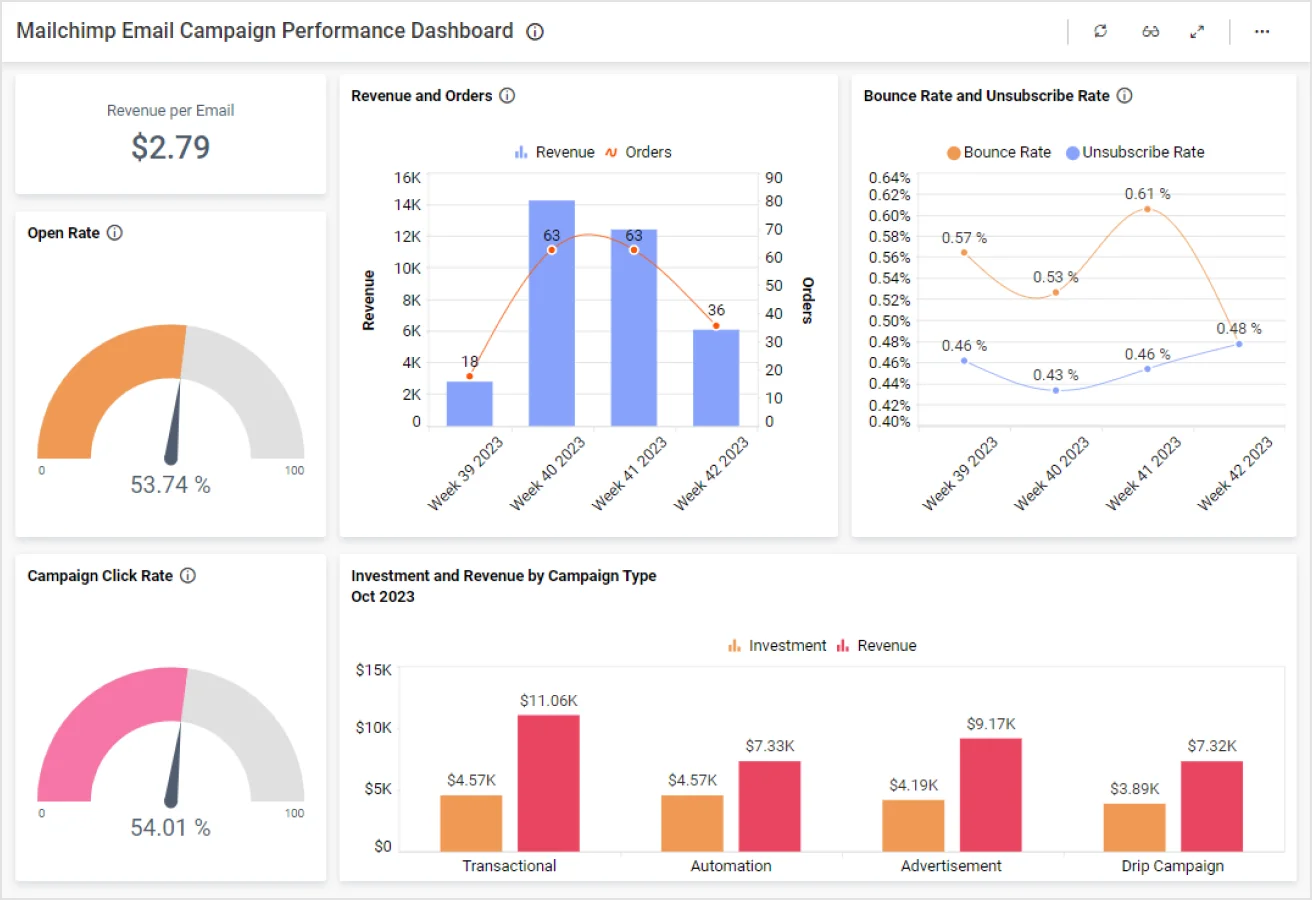
Here’s the truth no one tells beginners:
You can’t fix what you don’t track.
If you’re serious about learning how to start email marketing for beginners, you need to get comfortable with your numbers—not just writing emails.
Because the goal isn’t to send emails. The goal is to send better emails—consistently. That only happens when you start paying attention to what’s working (and what’s not).
5 Key Email Metrics to Monitor
Let’s break it down. These are the only metrics you need to focus on at the start:
1. Open Rate
This tells you how many people actually opened your email.
If it’s low, your subject lines probably need work—or your list needs cleaning.
Good Benchmark: 25–30%
2. Click-Through Rate (CTR)
This measures how many people clicked on a link inside your email.
Low CTR? That means your content or CTA didn’t connect.
Good Benchmark: 2.5–5%
3. Bounce Rate
This tells you how many emails didn’t get delivered.
High bounce rate = poor-quality list or invalid emails.
Fix it by:
- Using double opt-in
- Cleaning inactive or fake signups
4. Unsubscribe Rate
Unsubscribes aren’t bad—but if too many people leave after every email, something’s wrong.
Possible reasons:
- Too many emails
- Irrelevant content
- Misleading signup promises
5. Conversion Rate
This is the big one. It measures how many people actually did what you asked—buy, book, download, reply, etc.
It’s the real ROI signal. Everything else supports it.
How to Track These Metrics
Most email marketing platforms (like MailerLite, ConvertKit, etc.) have built-in dashboards with real-time analytics. Use them.
Also, connect your email campaigns to Google Analytics or Shopify/WooCommerce if you run an online store. That way, you’ll see exactly how email drives real revenue.
Pro Tip: Use A/B Testing
Test:
- Different subject lines
- CTA placements
- Send times
- Content formats (text vs. visual)
Then double down on what performs best.
When you’re just starting out with email marketing for beginners, it’s easy to get overwhelmed by data. But you don’t need to be a data scientist. Just focus on trends. Improve bit by bit.
And finally, let’s talk about the most important thing of all: growing your list the right way.
Because without an audience… none of this works. Let’s wrap it up.
8. Grow Your Email List Without Begging or Buying
Let’s be honest—your email list is your business’s most valuable digital asset.
But unlike followers on social media, you own your email list.
So the real question for anyone learning how to start email marketing for beginners isn’t just “how do I send emails?”—it’s how do I build a list of people who actually want to hear from me?
And no—you don’t need to buy leads or spam your contact list.
Here’s how to grow your list organically, fast, and with quality subscribers who convert.
Give People a Real Reason to Subscribe (aka Lead Magnets)
Nobody gives away their email address “just because.”
You need a compelling reason—something valuable, relevant, and instant.
Popular lead magnet ideas:
- Free checklist or cheat sheet
- Mini email course
- Exclusive discount
- Case study or whitepaper
- Free trial or sample
Example:
“Download our 5-minute Email Strategy Checklist—used by over 12,000 marketers.”
Put Opt-In Forms Everywhere It Makes Sense
This isn’t just about slapping a form in the footer.
Strategically place signup forms where people are already engaged.
Key locations:
- Homepage hero section
- Blog sidebar or after a post
- Exit-intent popup
- Product pages
- Link in your Instagram bio
- YouTube video descriptions
Mobile tip: Use a sticky bar or scroll-triggered form to avoid interrupting UX.
Use Social Media to Drive Signups
Turn your Instagram, TikTok, or LinkedIn audience into email subscribers—not just likes.
Ideas:
- Promote your lead magnet with a CTA
- Tease exclusive content only available via email
- Use Linktree or a Smart.bio to include your opt-in link
Example CTA:
“Want the full list? I only share it with my email insiders, Grab it here.”
Run Contests or Giveaways (Strategically)
Contests can explode your list if done right.
- Make the prize hyper-relevant to your niche
- Require email signup to enter
- Use tools like Gleam, KingSumo, or UpViral
- Promote via social ads or influencer collabs
Avoid giveaways that attract freebie hunters who’ll never engage again. Keep it targeted.
Keep It Clean, Not Just Big
It’s tempting to chase big numbers, but a small, engaged list always beats a large, cold one.
- Regularly clean inactive subscribers
- Use double opt-in for higher quality
- Re-engage or remove cold contacts after 60–90 days
Growing your list is not a one-time task—it’s an ongoing part of your strategy.
So as you implement everything you’ve learned in this guide, remember:
your list isn’t just a number. It’s a community.
And if you’ve made it this far, you’re not a beginner anymore.
Conclusion
You started this guide wondering how to start email marketing for beginners, and now?
You’ve got a complete roadmap—from your first signup form to fully automated email funnels.
Let’s rewind what you’ve just learned:
What You Now Know:
- Why email marketing still rules in 2025
- How to choose a platform that fits your goals
- Building a list the right way (no spam, no shortcuts)
- Writing emails that actually get opened and clicked
- Automating like a pro—even while you sleep
- Tracking the numbers that move the needle
- And most importantly: growing a list that wants to hear from you
My Advice for Beginners
- Don’t wait to be perfect—done is better than perfect
- Focus on value first, selling second
- Be consistent. Send at least 1 email per week
- Keep testing. Keep learning. Keep evolving.
The best email marketers aren’t the flashiest. They’re the ones who show up, provide value, and respect the inbox.
And now, that’s you.
What To Do Next?
- Pick a tool (MailerLite, ConvertKit, or Moosend—start free)
- Set up a welcome series
- Create a lead magnet that solves one small but real problem
- Write your first 3 emails and hit send
- Show up. Stay human. Build trust.
Want More Support?
Need swipe files? Templates? Automation walkthroughs?
Stay tuned—we’ve got advanced guides, case studies, and exclusive freebies coming soon.
Or better yet…
Join the SYNAPSE MARKETING Newsletter
Get weekly marketing tips, real-world email breakdowns, and zero fluff.
Now You Know How to Start Email Marketing For Beginners. And this is just the beginning. You’ve got the tools. The strategy. The spark.
Let’s build something that sells while you sleep.
5 Recommended Beginner-Friendly Tools to Kickstart Your Email Marketing
If you’re still asking yourself, “Where do I actually start?”—this is it. The tools you choose will either simplify your journey or make it unnecessarily complicated.
Here are the best beginner-friendly email marketing platforms that won’t overwhelm you but will still deliver serious results.
1. MailerLite – Best All-in-One Free Option
- Why I recommend it: Clean interface, drag-and-drop editor, automations, and generous free plan.
- Perfect for: Beginners, bloggers, solo entrepreneurs.
- Free Plan: Up to 1,000 subscribers and 12,000 emails/month.
- Website: www.mailerlite.com
TIP: MailerLite has pre-built workflows that are great for welcome series and product promos.
2. ConvertKit – Best for Creators
- Why I recommend it: Intuitive automation builder, amazing for content creators and course sellers.
- Perfect for: YouTubers, coaches, writers, and podcasters.
- Free Plan: Up to 1,000 subscribers (basic features).
- Website: www.convertkit.com
TIP: Use ConvertKit’s visual funnel builder to map your email strategy on one screen.
3. Moosend – Budget-Friendly with Advanced Features
- Why I recommend it: Affordable pricing, powerful automations, ecommerce tracking.
- Perfect for: Ecommerce stores, affiliate marketers, small businesses.
- Free Trial: 30 days of full access (no credit card).
- Website: www.moosend.com
TIP: Moosend has one of the best reporting dashboards for tracking performance easily.
4. Brevo (formerly Sendinblue) – Best for Multichannel Communication
- Why I recommend it: Includes SMS marketing + email, great for transactional emails too.
- Perfect for: SaaS companies, service businesses.
- Free Plan: Unlimited contacts, 300 emails/day.
- Website: www.brevo.com
TIP: Use Brevo’s segmentation + email scoring to target hot leads automatically.
5. Flodesk – Best Design-First Tool
- Why I recommend it: Beautiful email templates, easy-to-use UI, flat-rate pricing.
- Perfect for: Designers, boutique brands, photographers, creative entrepreneurs.
- Free Trial: 30 days.
- Website: www.flodesk.com
TIP: Use Flodesk if aesthetics matter just as much as functionality for your brand.
You don’t need to master every tool. Pick one. Get started. Grow from there.
And now you’re fully equipped—from mindset to metrics, from writing to automating.
Still asking, “How To Start Email Marketing For Beginners?”
Simple:
Pick a tool. Write your first email. Hit send. Repeat.
That’s the real start. And you just unlocked the blueprint.
Frequently Asked Question on How To Start Email Marketing For Beginners
What is the first step to start email marketing as a beginner?
Start by choosing a beginner-friendly email marketing tool like MailerLite or ConvertKit, then create a lead magnet and opt-in form to build your list.
Is email marketing still effective in 2025?
Absolutely. Email marketing has an average ROI of $44 for every $1 spent—still outperforming social media and paid ads in direct conversions.
How often should beginners send emails?
Aim for once per week to stay consistent. Focus on value-driven content rather than over-sending promotional messages.
Do I need a website to do email marketing?
No, you can start with a landing page provided by your email platform. Tools like ConvertKit and MailerLite offer built-in page builders.
Can I do email marketing without spending money?
Yes. Many platforms offer free plans (e.g., MailerLite, ConvertKit) with enough features to help you build and automate your first campaigns.
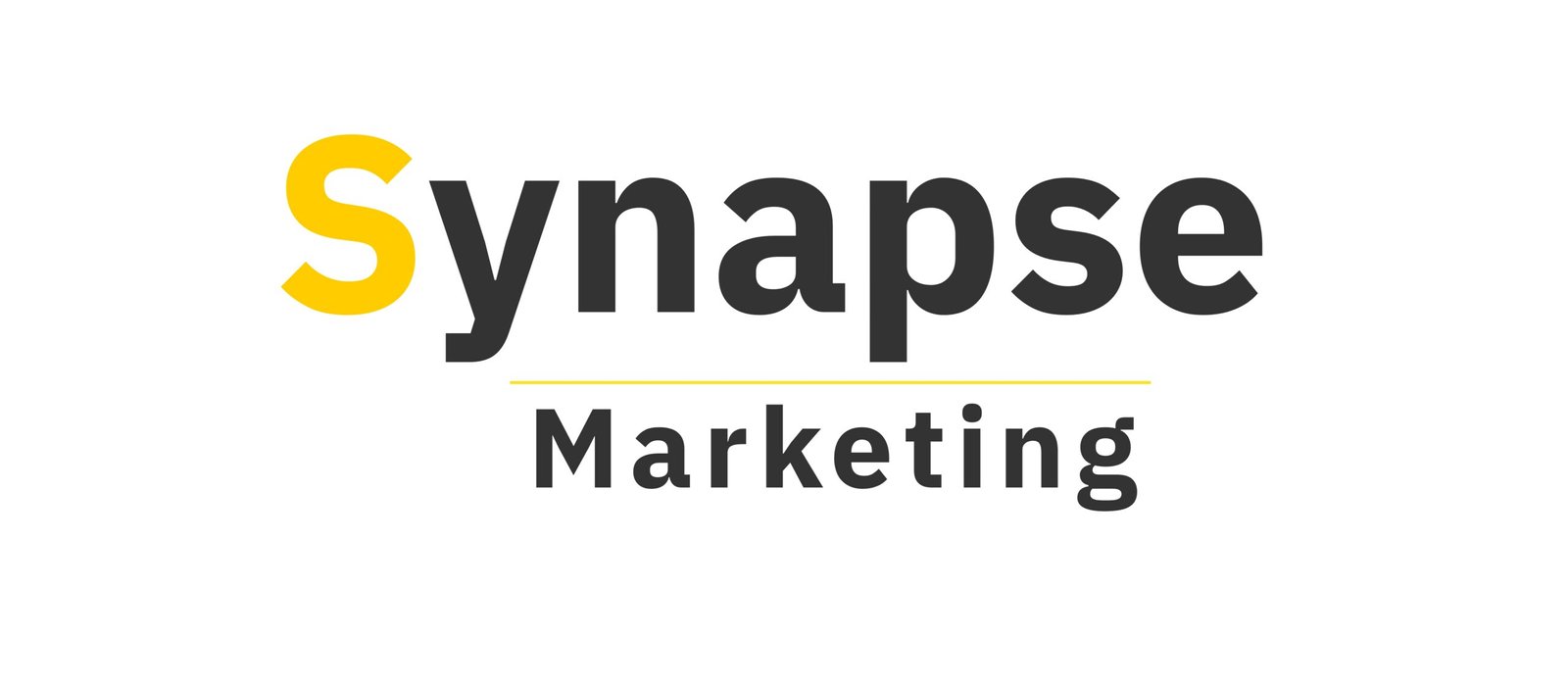




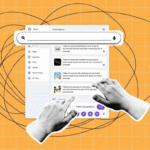


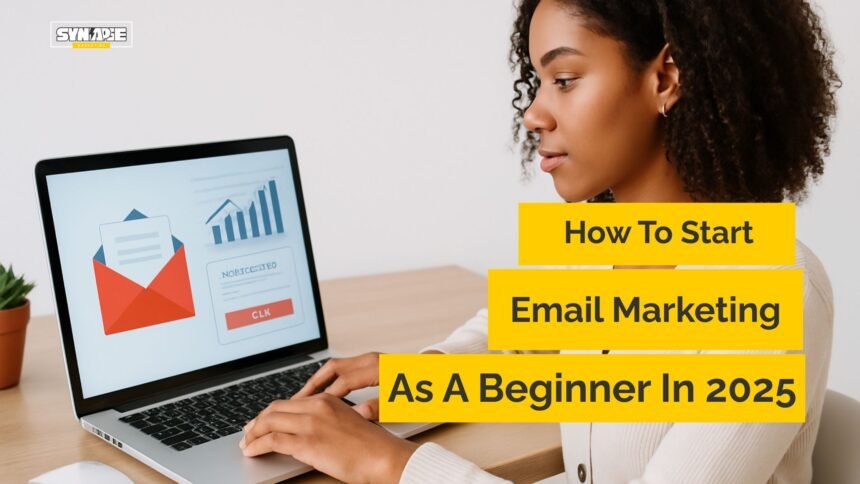
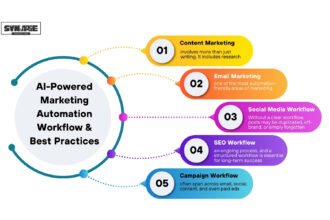



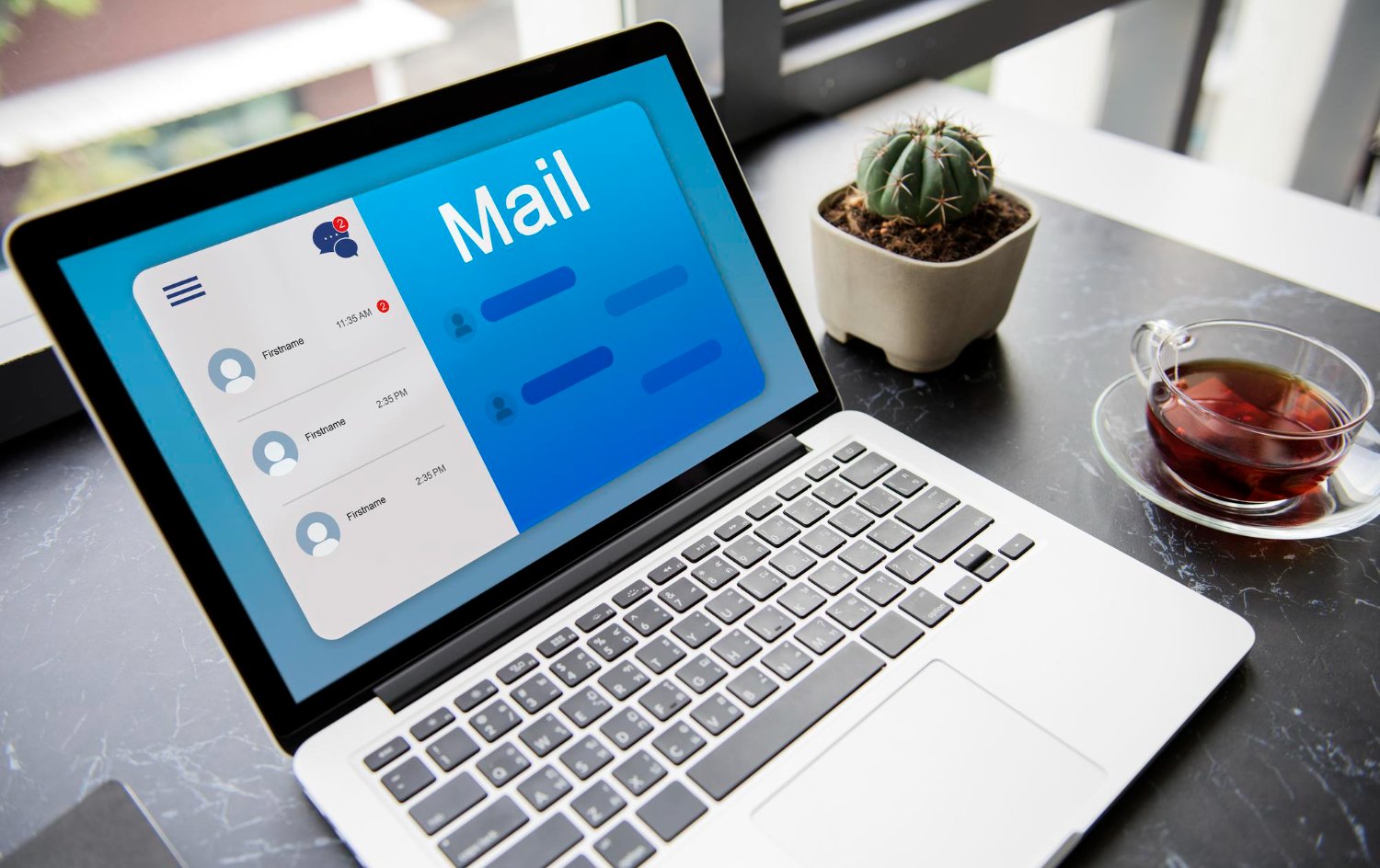


This is quite comprehensive indeed. This web page should be an ebook. Thanks for sharing.
Thank you for your positive comment